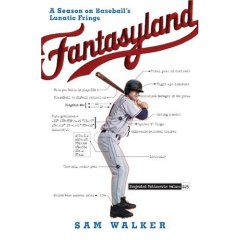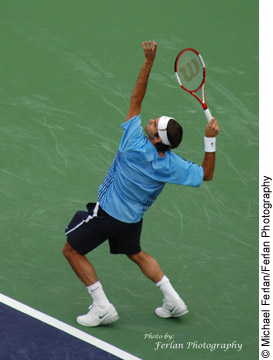If Argentina wants to win the Davis Cup title this weekend, David Nalbandian will have to jet pack into the Kremlin and steal it away.

If you prefer Sean Connery to the current version of James Bond, one Mr. Daniel Craig, you could rent a DVD of the movie From Russia With Love, but you could also load up your Gamecube and experience the video version of the adventure. You can see a screen shot of the game here. Evidently Bond is using his jet pack to whiz past – or escape from? – the Kremlin.
If I’m not mistaken, please correct me if I’m wrong, Bond used the jet pack in Thunderball, not From Russia With Love. Not that I’d know. I walked out of my last James Bond movie, somewhere around Octopussy, in a feminist snit. I was sick and tired of every woman in the movie appearing in a bikini. If you’re poolside, o.k., I understand that, but what woman lounges around her living room in a bikini? Again, correct me if I’m wrong. Maybe you lounge around your living room in a bikini.
If Argentina wants to win the Davis Cup title this weekend, David Nalbandian will have to jet pack into the Kremlin and steal it away. His teammates are capable players, the lowest ranked is Juan Ignacio Chela and he’s at number 33, but the Russians chose carpet for a reason.
Even though I’ve been diligently filling out fantasy tennis draws all year, I failed to notice that Agustin Calleri had made his way to the top 30; he now resides at number 29. Still, he’s 0-2 on carpet this year. This is the first year that Chela has won a match on carpet. He’s 3-9 lifetime and Jose Acasuso isn’t much better at 5-8. Nalbandian, of course, is princely on carpet. Next to Roger Federer, I can’t think of a player who has such an exceptional record on all surfaces. Even on grass he has a 17-5 record.
Nalbandian finished the year at number 8, low for him, and it looks like he had a down year. Then you look at his record and you see this: semifinals Tennis Masters Cup, semifinals Madrid, semifinals Roland Garros, semifinals Rome, semifinals Miami and…semifinals Australian Open. Nalbandian was very upset at the Tennis Masters Cup in Shanghai because his nine year old cousin, his godson, was killed in an elevator accident. It’s hard to know how this will affect him and it could be important because this victory will rise or fall on his racket.
As for the Russians, Davydenko won two tournaments this fall on carpet and one of them was in Moscow where his Davis Cup teammate, Marat Safin, was his opponent. Mikhail Youzhny peaked at the US Open making it all the way to the semifinals but it looks like that was a fluke. Dmirty Tursunov took a hard court title at Mumbai this fall but he also lost three straight times in the first round. He played a challenger in the Ukraine two weeks ago no doubt to build up some confidence.
If Nalbandian can win both of his singles matches, anything is possible. Nalbandian has a 4-2 record against Davydenko and he has a 10-2 record in Davis Cup singles, which is also exceptional. But he’s 2-6 against Safin and one of those two Davis Cup losses was to Safin.
The match is in Moscow, not Buenos Aires, and it looks like it’s a bit too much for Argentina. Nalbandian will win one of his singles matches but Russia will take its second Davis Cup title.
See also: Davis Cup: Tursunov Vs. Roddick

